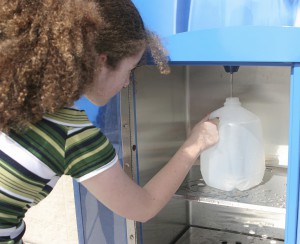 When an earthquake shook the East Coast a year ago, damage in DC was minimal, although OCSE staff was a bit rattled. However, the experiences of many of our colleagues in child support offices around the country have been far more challenging—many of you have been hit hard, both professionally and personally, yet you have persevered to return to business as usual after floods, fires, earthquakes, hurricanes and tornados. You speak from experience: We must all prepare for disasters.
When an earthquake shook the East Coast a year ago, damage in DC was minimal, although OCSE staff was a bit rattled. However, the experiences of many of our colleagues in child support offices around the country have been far more challenging—many of you have been hit hard, both professionally and personally, yet you have persevered to return to business as usual after floods, fires, earthquakes, hurricanes and tornados. You speak from experience: We must all prepare for disasters.
Since Hurricane Irene flooded the Vermont child support office in Waterbury last August, Office of Child Support Director Jeff Cohen has spoken to groups about scrambling to remove the servers and hardware and get them to an alternate site. All 46 state child support employees, including those at the State Disbursement Unit, became homeless overnight, says Director Cohen. The office had a plan, having responded to floods, flu outbreaks, and even a computer virus that took out their network for weeks; however, they did not expect the enormity of the coming storm. He emphasizes that everyone should have a plan in place. (See the page 1 article in the August 2012 Child Support Report.)
Over the past couple years, colleagues in New York, Pennsylvania, North Dakota, South Dakota, Minnesota, Illinois, Indiana, Missouri, Oklahoma, New Mexico, Colorado, Utah, Texas, Oregon and elsewhere have been forced to recover from large-scale natural disasters in their states and tribal lands that destroyed houses, businesses and sometimes child support offices. In the aftermath of Hurricanes Katrina and Rita in August 2005, child support directors in Louisiana, Mississippi, Alabama and Texas rallied their employees to locate families in the program—and one another—as many vacated their flooded homes. For families affected by any disaster, a break in child support operations means a break in getting money to buy children’s clothing, school supplies, groceries and medicines. After the hurricanes, child support workers teamed up across the country to help every facet of the struggling programs and the families they were serving.
OCSE and our 10 regional offices have COOPs (Continuity of Operations Plan) that identify core functions our government wants to make sure continues in an emergency. For ACF programs, this is typically funding of grants. OCSE has some unique operational functions that we must maintain, including the Federal Parent Locator Service and Federal Offset. We must also continue to respond to FPLS inquiries from states and telephone inquiries from the public, parents and Congress on behalf of its constituents. The plan also identifies essential staff and alternate sites.
OCSE also has authority to assist states to replace lost or damaged computer equipment or services, and we can waive our requirements for prior approval of federal funding to assist states to replace equipment and obtain services to install computers. By rapidly restoring states’ critical computer systems and services, which our programs depend on to manage our day-to-day operations, we ensure the shortest interruptions possible in our service delivery to families and children.
A federal interagency operational plan is in the works. It is not specific to the child support program; rather it discusses how agencies will work together with state, local and private organizations to respond to disasters.
You can read about federal assistance programs on the website for the Office of Human Services Emergency Preparedness and Response in the Administration for Children and Families. September is National Disaster Preparedness Month. You may want to mark the occasion by looking at material on the Department of Homeland Security’s FEMA website. Let us know how OCSE can help you with your plans. Share some of your tips on the Commissioner’s Voice blog.


